LinkedIn is one of the original social networks as we know it today, debuting in 2003 and years before Facebook. Today, advertising on the platform can be used to reach more than 500 million professionals worldwide. And the usefulness of this advertising channel for B2B marketers can not be understated. That’s because LinkedIn ads can be specifically targeted at professionals in the pharmaceutical, biotech, and medical industries, as well as a whole host of other science-related niches.
But what exactly are LinkedIn ads? What are their unique benefits and how can a science marketer leverage their power? This article will answer these questions and discuss the value of LinkedIn ads for science marketers.
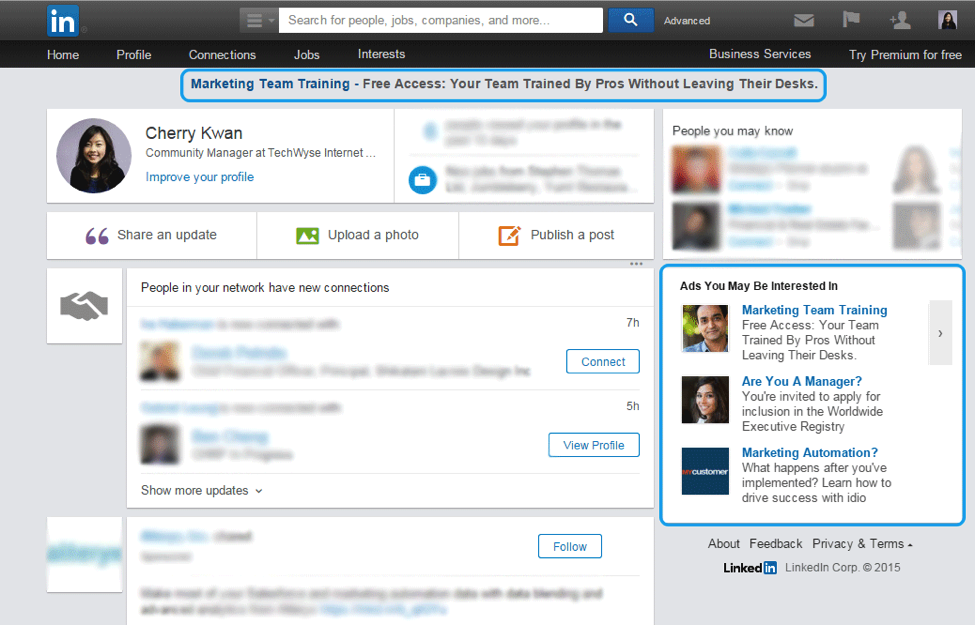
What Are LinkedIn Ads?
LinkedIn ads come in many different forms. Chief among those forms are:
1. Sponsored Content: helps you boost your content to the entire LinkedIn community or a subset thereof.
2. Sponsored InMail: provides your target audience with valuable content right in their LinkedIn inbox.
3. Dynamic Ads: tailors your message based on your audience’s activity, and uses profile images to make those ads more personal.
4. Display Ads can be focused to reach your target audience for maximum effect.
5. Text Ads can help drive new customers to your business through a pay-per-click platform.
It’s important to know the difference between these types of ads because they can be used in different ways to target different audiences, and therefore achieve different goals.
What Is the Unique Benefit of LinkedIn Ads?
Each type of LinkedIn ad can be used to different effect, and your choice will depend on a host of factors including budget, purpose, and goals of the campaign. But regardless of which type of ad format you choose, they all offer a unique benefit that is important to all science marketers: targeting.
Target by specific company name, job function, degrees, age, even by skills and job seniority. For technical products or information, you can promote your white paper to reach a scientist responsible for purchase making decisions: Perhaps a biologist over the age of 45, with a specific chemistry degree or field of study related to your product or service.
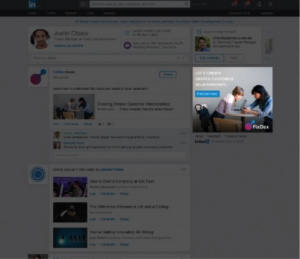
If your service would benefit CROs (contract research organizations who provide support to the likes of the pharmaceutical, biotech, and medical device industries), use LinkedIn’s targeting capabilities to find product managers at those ideal companies.
This targeting is a truly unique service that adds incredible value to science marketers and their advertising campaigns. Because LinkedIn is a business-focused social platform, your ad will be served when users are specifically looking for content or resources for their jobs. You may reach the same person on Facebook, but if they’re not ready to see an ad for a pharmaceutical spray dryer while they’re watching that Tasty cooking video, your ad could just be as ineffective as if it didn’t reach them at all.
How Can a Science Marketer Leverage the Power of LinkedIn Ads?
Regardless of which type of LinkedIn ad you choose, there are three ways you can leverage the power of this platform.
1. Create Ads Specific to How LinkedIn Will Serve Them
Producing good ads can be a challenge no matter what platform you’re using. LinkedIn Text Ads, for example, are limited to a 25-character headline and a 75-character description. That’s all you get to make a good impression. Because of this, you need to maximize your ad’s effectiveness and focus on hooking the user
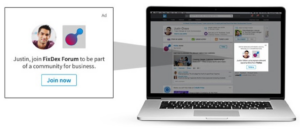
For LinkedIn’s other options that allow for more than text, use engaging images to appeal to the reader’s visual sense. Be sure to use active verbs like “join”, “discover”, “learn”, “open”, and so on to make a strong call-to-action. After the call-to-action, give the reader a short link they can use to reach your website. Finally, the text of your ad should be “snackable” to allow for easier digestion. This type of “short-and-sweet” content is also effective at grabbing and holding the reader’s attention. Not sure what we mean by “snackable”? Check out the example below from LinkedIn itself. It is very clear why you should follow through on the ad, with simple, clean imagery that both complements the CTA, and doesn’t distract from it.

2. Target Your Audience Effectively
The power of LinkedIn targeting lies in both its reach and its focus—you can reach as many people as possible or you can target just a specific group, even actual LInkedIn groups. But that flexibility can lead to two distinct problems: over-targeting and repeat targeting with multiple campaigns.
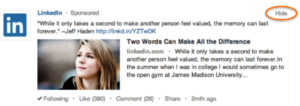
Over-targeting dilutes your message and can hinder the success of your campaign. The more focused your ads are, the better your campaign will fare.
Similarly, don’t target the same group with multiple campaigns. Doing so could put your two campaigns against each other and result in mixed messaging. The goals of your campaign will inform your decision on who to target. So make sure those goals are firmly established and that you have a clear picture of the demographic you’re trying to attract with your marketing efforts.
3. Choose The Right Payment Option
LinkedIn ads can be paid for in one of two ways:
1. Cost per click (CPC)
2. Cost per impression (CPM)
But which one is better for your campaign? According to LinkedIn’s getting started guide, “CPC is often used for action-oriented campaigns like lead generation or event registration. [CPM] is typically a better fit when brand awareness is the goal.”
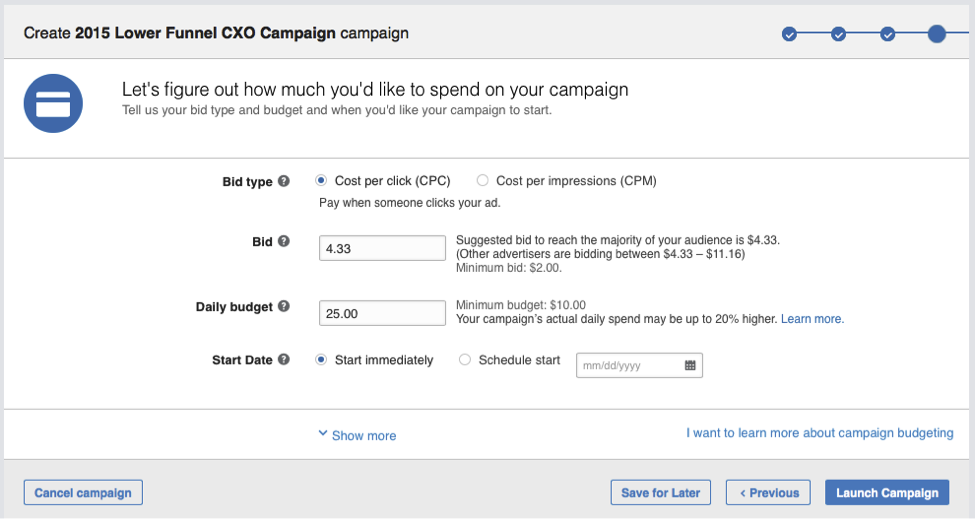
You will also be asked to enter a bid amount. Think of this number as the price you’re willing to pay to reach your target audience. Keep in mind that other marketers are trying to reach that audience too. For that reason, it’s usually better to bid on the high end to ensure that your ad get adequate visibility. According to the article LinkedIn Advertising 101: Bidding, “…if you win your bid, you will only pay the minimum needed to beat the second-highest bidder. You will never pay more than that, regardless of how high your max bid is set.” As you can see, it pays to bid high if you have the budget to do so.
For more information on LinkedIn Ads and a step-by-step guide to getting started, be sure to visit LinkedIn’s How to Advertise On LinkedIn page.
4. Make Your Ads Visible During the Busiest Part of the Day
40% of LinkedIn’s 500 million accounts use the platform daily, with 106 million active monthly users. So like other platforms, these users are interacting with content at all hours of the day on tablets, phones, laptops, and desktops. And because LinkedIn is available around the world, it’s important to stay visible for as long as possible.
This shows the importance of setting up the right display timing for your campaign. Each type of LinkedIn ad is paid for in a slightly different way, so you want to make sure that the ad you choose is visible during your target demographic’s peak use. You don’t want your ads to expire at Noon and then miss out on the afternoon and evening traffic. If you are still unsure where to start with bidding, LinkedIn advisors can help you set up the right bidding and budget strategy to help you achieve your goals.
Harness The Power Of LinkedIn Ads
LinkedIn can reach a large segment of your B2B market that traditional advertising cannot. That’s not to lessen the importance of print ads and the like, but for sheer coverage, or specific targeting, LinkedIn ads for science marketers specifically are a powerful addition to any campaign. This unique ability to target allows your LinkedIn ads to reach just the right audience, at the right time, and ultimately increase the likelihood that your campaign will succeed.


















